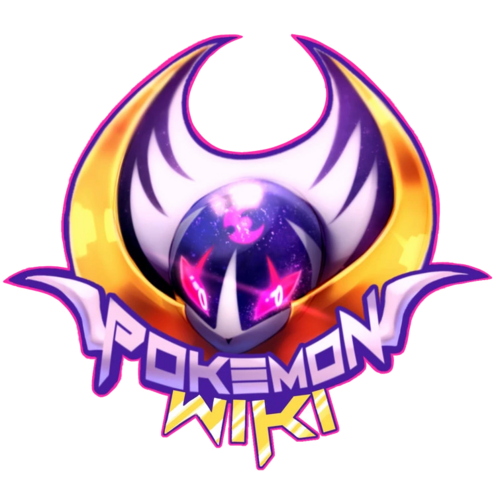
A sprite of the male player's clock in Pokémon Ruby Version and Pokémon Sapphire Version
Time is a mechanic introduced in Pokémon Pikachu before debuting in the core series in Pokémon Gold Version and Pokémon Silver Version.
Description[]
Time works in the Pokémon franchise a lot like in real life, affecting the lighting outside the Pokémon World and having days divided in the same types of phases as in real life.
As a game mechanic, time utilizes an internal clock either within the game or, for later consoles, within the system itself. The flow of time in the Pokémon games has been programmed to flow identically to real life. The role of time specific to Pokémon media includes wild Pokémon encounters, certain events, the growth of Berries, and even the evolution of some Pokémon.
Appearances[]
Core series[]
Generation II[]
In Pokémon Gold Version and Pokémon Silver Version and Pokémon Crystal Version, time is separated into three parts of a day: morning, which runs from 4:00 AM to 9:59 AM; day, which runs from 10:00 AM to 5:59 PM; and nite, which runs from 6:00 PM to 3:59 AM. Furthermore, the game also has days of the week. The player can check the current time from the Time function on their PokéGear. The morning depicts the map with a yellowish tint, while the nite depicts a darkened map with light and dark purple tints, in addition to the buildings having illuminated doors and windows.
Non-playable characters can be found outside the most often during the day. Certain wild Pokémon like Hoothoot can be encountered only during the night. Eevee can only evolve into Espeon during the day and into Umbreon during the night.
In the Virtual Console ports, the time in the games is defined separately from the Nintendo 3DS internal clock while still flowing at the same role. As such, if the player changes the time on their system, this does not affect it in the Virtual Console ports.
Generation III[]
In Pokémon Ruby Version and Pokémon Sapphire Version and Pokémon Emerald Version, the player can set the time on their clock just after moving into their bedroom. Unlike the previous generation, time has little function in the game, the overworld lighting is unaffected, and morning is not a recognized time of day. The Like before, Eevee evolves into either Espeon or Umbreon during the day or night, respectively. The largest role of time is its effect on the growth of Berries.
Like the original Generation I games, Pokémon FireRed Version and Pokémon LeafGreen Version has no time function implemented.
Generation IV[]
Pokémon Diamond Version and Pokémon Pearl Version, followed by Pokémon Platinum Version, are the first games in the core series where the flow of time matches the system's internal clock, with the Nintendo DS being the first Nintendo handheld to have this function. Time has a larger role and reinstates many of the functions from Generation II, namely the overworld lighting and wild Pokémon encounters. The morning occurs from 4:00 AM to 9:59 AM, like in the Generation II games. The day goes slightly longer, from 10:00 AM to 7:59 PM, making the night flow slightly shorter, from 8:00 PM to 3:59 AM. The player can refer to the time on the Digital Watch or the unlockable Analog Watch application on their Pokétch. Some of the music themed are altered slightly during the night.
Time in Pokémon HeartGold Version and Pokémon SoulSilver Version works similarly to the original Generation II. Additionally, the consideration of time is essential when scheduling a rematch against a Gym Leader, in addition to their availability only during certain days of the week.
Generation V[]
Time works in conjunction with the seasons mechanic in Pokémon Black Version and Pokémon White Version and Pokémon Black Version 2 and Pokémon White Version 2. The player can also look at the time during a battle at the top left of the Touch Screen.
Spinoffs[]
Pokémon Pikachu[]
In Pokémon Pikachu, time is measured by a clock, and the game also allows the player to set an alarm.
Pokémon Channel[]
In Pokémon Channel, the time matches what is set on the Nintendo GameCube internal clock. Time has an essential role during the plot, as some events require the player to wait until the next day. The Pokémon that appear in the outdoor areas also depend on the time of day, somewhat similarly to wild Pokémon in games of the core series with a time function.
Pokémon GO[]
In Pokémon GO, the flow of time corresponds to the time zone where the player is. Time affects the background and Pokémon encounters, similarly to the core series.
Pokémon Sleep[]
In Pokémon Sleep, time is uniquely measured by the meals of the day, with breakfast going from 4:00 AM to 11:59 AM, lunch from 12:00 PM to 5:59 PM, and dinner from 6:00 PM to 3:59 AM. The area where sleep research occurs has different lighting and background music between the morning, day, evening, and night.
External links[]
Further reading[]
- Time on the Zelda Wiki

